Best Oolong Tea of 2021
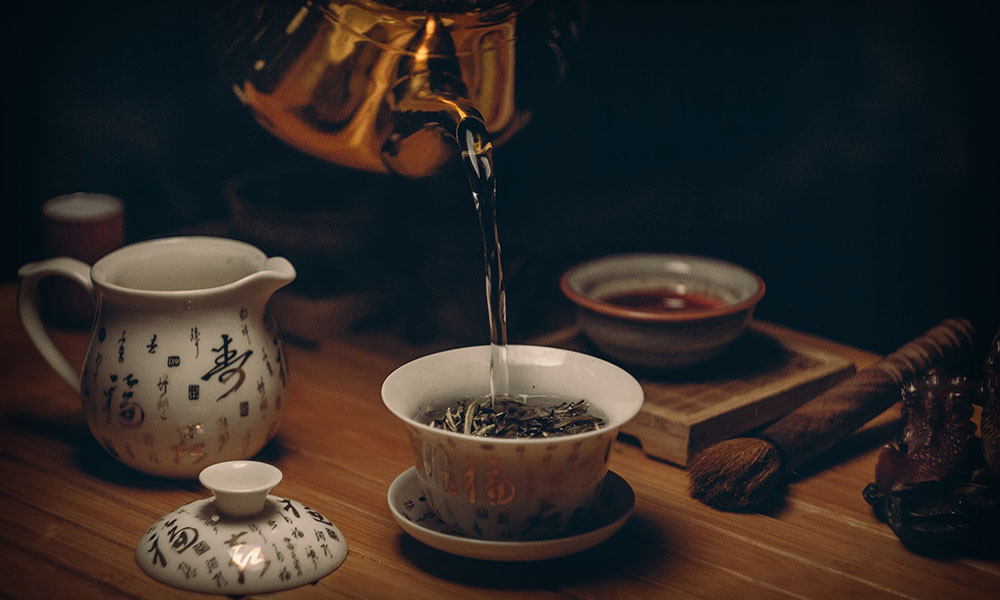
Oolong is one of several different types of traditional Chinese tea. While there are other teas that are more popular oolong is renowned for its distinctive flavor and aroma. Oolong is derived from the same plant that produces both green and black teas.
What gives oolong tea its distinctive characteristics is the level of oxidation (1) it’s subjected to. While black tea is highly oxidized and green tea is subjected to virtually no oxidation, oolong falls somewhere in the middle. The purported health benefits of oolong are numerous and include cardiovascular benefits, the ability to help you lose weight and numerous antioxidant-related benefits. Here are the 10 best oolong teas on the market today.
1. Jade Oolong Tea
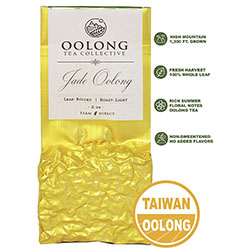
Jade Oolong Tea contains no added flavors, sweeteners, preservatives or chemical additives of any kind. It’s pure authentic oolong harvested in Nantou, Taiwan on a family farm that’s generations old. The Oolong Tea Collective is proud of their efforts to preserve the integrity of the tea trade and never engages in the kind of predatory practices that drive farmers into debt and out of business.
The tea itself displays hints of magnolia and jasmine and has a rich aromatic air reminiscent of the high mountains from whence it came. Each bag is the result of a recent harvest, hand-picked and last touched by the hands of the tea master in Nantou. Vacuum sealed in a gold, multi-layered foil bag Jade Oolong from the Oolong Tea Collective is mountain fresh and never falls victim to light or humidity.
2. Avant Grub Premium Oolong Tea
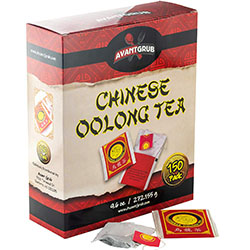
Purists may scoff at tea bags but they’ve probably never enjoyed a cup of Avant Grub Premium Oolong Tea. This tea has a rich, smooth flavor and is ever so lightly fermented before packaging. The result is a pleasant floral taste and a noticeable but not overwhelming caffeine lift to get you started in the morning. Each box of Avant Grub Premium Oolong Tea contains 150 individual bags that are themselves wrapped in airtight packets to preserve their freshness.
The tea is harvested and processed in the traditional manner with no chemical additives or artificial flavors introduced that could interfere with the natural taste. And just as a bit of frosting on the cake Avant Grub offers a 101 day trial period. If you’re not completely satisfied simply return the remainder and receive a full refund.
3. Tealyra Oolong Loose Leaf Tea
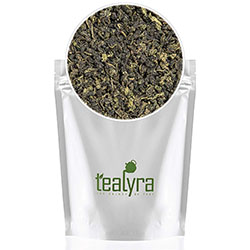
Tealyra Oolong Loose Leaf Tea is going to delight purists and novices alike. Grown in China at altitude and harvested by hand Tealyra comes in a resealable foil pouch that allows you to zip in the freshness. This particular tea is made using an ancient formula that provides it with a sweet, floral aroma and a light smooth body that relaxes and refreshes.
It’s completely free of additives, artificial flavors or sweeteners and packed fresh at the source. The color is a light green, indicating it’s only been lightly fermented and you’ll need about 1 teaspoon to make a full cup of tea. That means you’ll get approximately 50 cups out of a single package. Considering the price it’s a considerable value for any true tea lover.
4. Teavana Maharaja Chai Loose-Leaf Oolong Tea
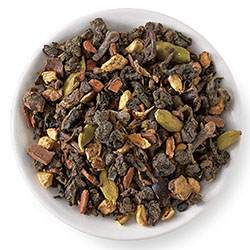
This loose leaf chai-oolong blend is characterized by spicy notes provided by cinnamon, pepper, cloves and ginger. While it’s not a straight up oolong tea the recipe here is so intoxicating that it demanded a spot on our list.
Another reason we’ve caved to the blend and gave it a spot? Because Starbucks, the owner of Teavana, has decided that when the current supply is exhausted they won’t be making any more. So grab it while you can. 1.5 teaspoons should do it, along with 8 ounces of 195 degree water. Steep it for 3 minutes and don’t forget to get up close and personal with your nose. An olfactory experience with few equals.
5. Bigelow Oolong Tea
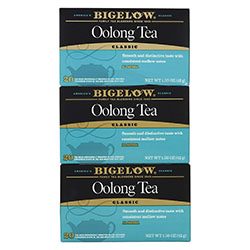
Bigelow is one of the biggest names in tea, but not a name that’s necessarily associated with oolong. But their Oolong Classic Tea Bags are a treat for those who lack the time or inclination to deal with loose leaf tea. We dare say that if most tea lovers were blindfolded and unaware how this tea was made few would guess that it’s the product of a bag.
That’s because in the best oolong tradition there’s nothing vulgar about Bigelow’s Oolong Tea. It has a light, refreshing air, with a smooth agreeable temperament and the airtight packets do an admirable job retaining that sense of mountain freshness that make oolong so distinctive. A great tea to have on hand for holiday parties, brisk winter mornings and light lunches.
6. Davidson’s China Oolong Bulk Tea
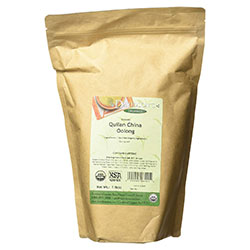
Davidson’s China Oolong is a product of the surreal landscape of Quilan (also known as Guilin). Like the enigmatic landscape from which it grows Davidson’s Bulk Oolong exhibits complex yet deeply satisfying characteristics. And with its vague nutty overtones and slightly woodsy personality it’s a must for any true oolong lover.
Before you heat your water and steep your tea however keep in mind that this particular brew provides a fairly hefty dose of caffeine. If you’re okay with that they you’re in for a treat. The paper bag is foil lined to help ensure freshness but you’ll be better off transferring the contents to a mason jar or a ziplock bag after opening. Guaranteed organic and packed on site in the heart of China.
7. Taiwan Da Yeu Ling Oolong Tea
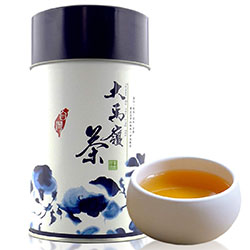
Taiwan Da Yeu Ling Oolong Tea is grown and harvested by hand in the mountains of Taiwan and quickly vacuum packed to retain its freshness. The vacuum bag is placed inside an evocative, traditional style tin which can then be used for storage.
The tea itself exhibits a delicate floral scent and presents a bit of sweetness to the tongue. The aroma is light and pleasing and the attractive tin makes this a great gift idea for the tea lover on your holiday shopping list. Use 2 teaspoons with 8 ounces of 200 degree Fahrenheit water and steep for 3 to 5 minutes for a mountain tea experience that’s sure to please the senses.
8. The Republic of Tea Milk Oolong Tea
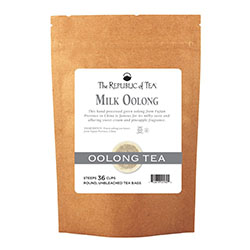
Fujian province is known for its mind bending landscapes, compelling architectural treasures and of course, tea. The Republic of Tea Milk Oolong Tea hasn’t actually had milk added to it. It just has what most people describe as a “milky” taste, though to be sure the analogy is imperfect at best. “Silky” is probably a more accurate description for the taste of this tea, although too much ink shouldn’t be spilled trying to nail it down precisely.
You’ll have to taste it for yourself. It truly is a one of a kind tea experience and one that’s equally hearty and satisfying whether you serve it hot or ice tea cold. The tea itself is 100% organic, verified to be free of GMOs, sugar, carbs, calories and preservatives and each bag makes 36 cups.
9. Vahdam Oolong Loose Leaf Tea Sampler
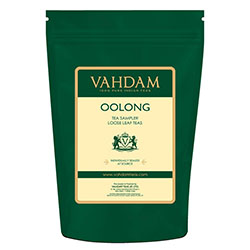
The Vahdam Oolong sampler contains Blue Mountain Oolong, High Mountain Oolong, White Mountain Darjeeling Oolong and several other teas. If you’re picky about your tea there are bound to be some here you love and some you love less. But if you’re looking for a great gift for the tea lover on your list you’re certain to hit the mark with this sampler.
The included teas are packaged within 3 days of harvest and each is sealed in their own foil lined paper bag within the larger bag. All of the leaves can be reused several times and most provide a fairly robust caffeine jolt, so be mindful of that.
10. Tealyra Imperial Ginseng Oolong Loose Leaf Tea
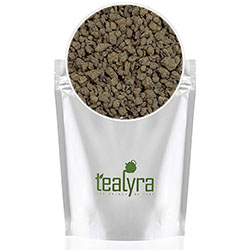
The last of our best oolong teas is also the 2nd one our list from Tealyra. This Oolong Loose Leaf Tea leaves an aftertaste that suggests vanilla and provides a flowery aroma that tickles the nose just a bit. Like most oolongs it’s caffeine rich, but because it’s only mildly oxidized the earthiness is kept to a minimum.
It must be said that the ginseng gives it an invigorating quality that’s right in keeping with the caffeine kick. Use 1 to 1.5 teaspoons per 8 ounces of water and steep between 2 and 3 minutes depending on your taste.
FAQs
What is Oolong Tea?
Oolong tea has been around for centuries and is also known in China as black dragon tea and wulong tea. It’s lightly oxidized, mild in flavor and similar in aroma to traditional, fermented pu-erh teas from China’s Yunnan province. Oolong is considered one of the 4 “true teas” (2) and is derived from the leaves of the Camellia Sinensis plant.
As we mentioned at the outset oolong tea is subjected to more oxidation than green tea but not as much as black tea. That said oolong teas can vary pretty significantly in flavor depending on the precise amount of oxidation they’re subjected to. Each producer will have their own set of guidelines for how long to oxidize the teas leaves to get exactly the flavor they’re after. Those oxidation levels can range from 8 to 80 percent.
Oolong tea varieties also exhibit different shapes and colors. Some appear rolled, others twisted and still others may be curled or shaped into balls or spindles. This shaping of the tea leaves is considered important as it enhances both the aroma and look of the tea. Along with growing conditions and oxidation levels the shape of the tea leaves is believed to influence the flavor of the tea. And oolong teas exhibit an array of flavor characteristics from fruity, to sweet, to earthy and more.
What are the Benefits of Drinking Oolong Tea?
Oolong tea is believed to provide an array of health benefits including, but not limited to:
- Helps you lose weight – This may be one of the most overused cliches there is when it comes to various foods and supplements, but in this case there’s actually something to the notion that oolong can help you lose weight (3). It seems that regular drinking of oolong tea can actually boost the metabolism and help fend off obesity. That’s not a license to chronically overeat however. But it does suggest that obese or overweight individuals looking for a way to enhance the effectiveness of a weight loss diet should consider oolong tea.
- Helps with digestion – For as long as it’s been around people have used oolong tea to help settle an upset stomach. And that’s just as true today as it was 2,000 years ago. While there haven’t been a ton of scientific studies done to confirm this there is a mountain of anecdotal evidence that’s added to every day which suggests it’s absolutely the case. It’s believed this calming effect is the result of the mild antiseptic properties of the tea (4). The tea ends up clearing your stomach of the harmful bacteria causing the upset and order is restored.
- May help prevent heart disease – Studies have shown that oolong tea can reduce cholesterol, serum triglycerides, plasma glucose and adiponectin levels (5). Add these all up and you get the potential for a significant reduction in the progression of atherosclerosis in patients with coronary artery disease (CAD).
- Provides an energy boost – There is no secret where this energy boost is coming from. Oolong tea contains a fairly significant amount of caffeine (6). Therefore, if you are sensitive to caffeine you may want to either go easy on the oolong or try a decaffeinated version. If you’re not caffeine sensitive however you’ll likely enjoy the energy bump you get from oolong. The caffeine boost is also largely responsible for the enhanced mental alertness that is sometimes attributed to drinking oolong tea.
- Promotes healthier skin and hair – Oolong tea is rich in antioxidants. Antioxidants are the body’s front line of defense against free radicals (7). Free radicals are atoms that contain unpaired electrons which course through the body seeking electrons they can scour off of other atoms. This ends up causing a phenomenon known as “oxidative stress” whereby healthy cells are undermined and various diseases and conditions result. By fighting the scourge of free radicals oolong tea can help alleviate conditions like eczema and strengthen hair follicles to prevent unnatural hair loss.
- Helps stabilize blood sugar levels – Those suffering from adult onset diabetes (also referred to as Type II diabetes) may benefit from drinking oolong tea. Studies indicate that people suffering from type II diabetes who drink oolong tea regularly experience a lowering of overall blood glucose levels (8). While the exact mechanism behind this lowering is not fully understood the effect is significant enough to merit serious attention from diabetes patients.
- Prevents the build up of dental plaque – Studies confirm something long claimed by proponents of oolong tea. And that is that drinking it can help produce stronger teeth and lessen the amount of tooth decay a person suffers. Oolong tea does this by fending off plaque production (9) and by preventing the proliferation of harmful bacteria in the mouth that can damage gums.
- May help prevent bone loss in women – A 2014 study strongly suggested that oolong tea consumption may help prevent bone loss associated with osteoporosis (10). While the study was relatively small (127 women) and was conducted using Han Chinese women only there is no reason to think the benefits could not also be enjoyed by other women as well. And indeed a separate study on women from a wider array of ethnic backgrounds demonstrated that tea also plays a role in strengthening the hip joint in all postmenopausal women (11).
- May help strengthen your immune system – The antibacterial and antioxidant properties of oolong tea that we touched on earlier also play a role in helping to bolster the immune system. They do this by helping to fight off minor bacterial invasions and preventing free radicals from potentially causing an array of different conditions. As a result your immune system is not stretched too thin and is available to give its full attention to any serious conditions that may arise.
Does Oolong Tea Produce any Side Effects?
For the most part oolong tea, like green and black tea, is not believed to produce any significant adverse side effects when drunk in moderation. However, some people are of a mind that if X amount of anything is good then XX must be even better. In most cases that’s not so. And it’s not the case with oolong tea either. Drinking more than 5 or 6 cups of oolong per day may produce one or more of the following side effects:
- Diarrhea – Oolong has been known to produce diarrhea when consumed in unnaturally large quantities. Drinking one or two cups per day however should not cause any problem.
- Hypokalemia – Hypokalemia is defined as having too little potassium in your blood. It is believed that excessive amounts of oolong tea can interfere with potassium absorption and contribute to the development of hypokalemia (12).
- Vitamin B1 deficiency – While it is extremely rare Vitamin B1, also known as thiamin, can sometimes be affected by excessive amounts of oolong tea. This thiamine deficiency can lead to a serious condition known as beriberi (13).
- Excessive bleeding – Circumstantial evidence suggests that excessive consumption of oolong tea may interfere with the normal clotting action of the blood. Therefore, those with clotting issues should talk to their doctor before drinking oolong.
Again, these side effects only come into play if one is consuming large amounts of oolong tea on a daily basis (typically more than 5 or 6 cups per day every day). But even then, however, a person may not develop any of them. We present them here strictly out of an abundance of caution.
What’s the Best Way to Make Oolong Tea?
Tea masters and other purists will insist that no good can come from using tea bags. We appreciate where they’re coming from but not everyone has the time to deal with high quality loose oolong tea leaves. So our recommendation would be to use the loose teas when time and circumstances permit and keep some bags on hand just in case.
- When brewing loose oolong tea it’s typically recommended you use two teaspoons of tea for every 8 ounces of water.
- The water should be hot, not boiling, with a temperature between 195 and 205 Fahrenheit.
- If you have no way to measure the temperature then bring the water to a boil and let it sit for 2 minutes before using it.
- Oolong should be left to steep for 2 or 3 minutes. You’ll need to try different steeping times to find the one that sits best with you.
- In most cases high quality oolong tea leaves can be reused several times before they need to be discarded.
Conclusion
Whether you call it black dragon tea, wulong tea, oolong tea or just oolong you’re going to love the taste and aromatic qualities of this ancient beverage. But oolong is more than just an ideal beverage around which to build a relaxing interlude. It also provides a wealth of benefits for your heart, head, bones, immune system and more. On top of all that scientific studies confirm it can actually help you lose weight. If you haven’t tried oolong tea pick up one of the fine products on our list and find out what all the fuss is about. You might never go back to your green tea again.

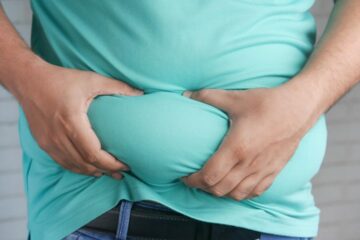
0 Comments